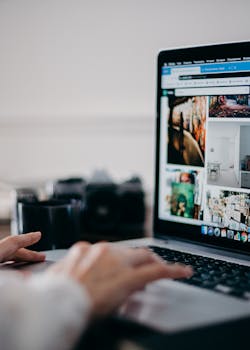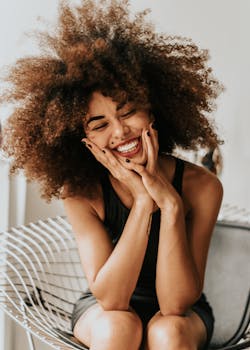
Expert Tips on Choosing the Best Photo for Your Blog Post
A great image enhances a story. From a compelling header photo to a perfectly placed video, an article can come alive through carefully chosen visuals.
If you don’t have an image on hand, you’ve likely sourced stock images from free websites like Pexels. So how do you pick the perfect stock image? And how do you mix up and vary the types of images you pick?
I write mostly about coffee, and while there are hundreds of beautiful stock photos of latte art or cozy cafés all over the internet, seeing those images on every article would get old quickly. As the former online editor for Barista Magazine, a trade magazine that published content daily, I had to think critically about what images should run with each piece.
The perfect stock image can make the difference between an article a reader scrolls past and one that compels the reader to click and learn more. The content of an article might be fascinating, but it doesn’t matter if your audience isn’t compelled to click and read.
If you think creatively about what you want to communicate to your readers, you can find gripping images that draw your audience in and keep them engaged all the way through your piece.
If you’re looking for original ways to choose stock images, here are a few tips to help you search and pick the exact image that’ll make your work stand out.
The perfect stock image can define and expand your audience
As humans, we’re drawn to other people—and pictures of other people. A study performed by the Georgia Institute of Technology and Yahoo Labs showed that photos with peoples’ faces are “38% more likely to receive likes and 32% more likely to receive comments.”
However, if your images only feature one type of group, or one type of setting, you immediately limit your audience.
Imagine an article about how to ask your boss for a raise. Before you pick an image, try to define who your audience is.
Because this article is about the workplace, it’d be easy to pick a group of people working in an office or wearing suits. But can a server ask for a raise? What about a truck driver? How are you picturing a workspace? Who is in charge, and what do the workers in the picture look like?

Even the small details of an image matter, like the hand pouring a coffee.
Photo by Quang Nguyen Vinh · View Photo
For me, this means picking photos featuring a diverse variety of people making and enjoying coffee. Coffee is a global beverage, so the stock images I use need to reflect that. It’s easy to miss how subtle this can be—even images with a hand holding a coffee cup need to be considered and reflect the diversity inherent in my industry.
Recently, Pexels partnered with Elevate to release a set of free images featuring people with disabilities drinking beer. Photos like these are not only important because representation matters—they can also expand your pool of potential readers and signal that your article is meant for a diverse group of people.
Think about who you want to reach with your content and how your visual choices might enable you to reach a larger audience. Keeping this in mind as you search for imagery can also lead you to more interesting and varied visual assets.

A shot from the Elevate photo collection.
Photo by ELEVATE · View Photo
Get creative with niche topics
At Barista Magazine, I published stories about coffee every day, so images featuring coffee mugs and espresso shots got repetitive quickly.
Every article always has a theme—beyond what the content of the piece is, there are a few words or ideas that you can pull from the story, and use to inspire your image search.
Recently, I wrote a piece for my personal newsletter, titled “How Much Money Should I Ask For”, which was aimed at folks who received a promotion but didn’t know how much more money to request.

Think outside the box to find fresh images for your story.
Photo by Lukas · View Photo
Although my audience is still coffee-focused, imagery with coffee in it didn’t make sense for this article. An image of money also didn’t feel quite right, so I wrote down words I associated with money. Eventually, my search led me to photos of ATMs.
An ATM is a machine we “ask” for money, which fit the theme of the piece. I ended up sourcing an image of an ATM at nighttime lit by neon, which evoked some of the uncomfortable feelings that might come up when talking about money.
If you’re stuck, write down a word or two that appears in your piece, and then write down more words associated with the original phrases. There’s no mention of an ATM in my piece, but by thinking about money in an abstract way, I was able to find a photo that matched both the content and tone of the article.
Video by Taryn Elliott · View Video
Not every visual has to be a photo
Most stories run with photos, but video can also be a great way to amplify your story.
Videos tell a story and set the mood for your piece. If your article focuses on coffee in the morning, you might try to pick visual content that’s warm and inviting. A video of coffee being poured might more powerfully convey that moment than a photo.
By featuring something in motion, your audience imagines being part of the story—they’re pouring the coffee, they’re taking in the aroma, they’re holding the cup in their hand.
A well-placed video can create an experience, because your audience sees something happening. They’re watching a person walk across the beach, or having a conversation with a friend. Your audience becomes part of that world.
A video can help tell the story you want to convey.
Video by fauxels · View Video
For articles where you want your audience to experience a strong feeling or evoke a sense, videos can be pivotal.
Videos can also spark curiosity. An image of a group of people texting can convey an idea, but a video of people on their phones is more thought-provoking. In this video, the camera travels in a horizontal line capturing numerous people on their phones.
You don’t just see a group of people texting—the video conveys that they’re in a line, that the line is long, that they’re all doing the same thing. The video invites the reader to ask questions that may be answered by continuing to read further into the article.

Choose images that are just as stylish as your website.
Photo by RF._.studio · View Photo
Visual assets communicate more than just what the article says
Most online publications and blogs have a main landing page where recent stories are listed. Usually, articles are arranged on a landing page by their headline and leading photo. The stories in your publication might not all be related, but because they’re listed together, their accompanying photos should be connected.
While your visual assets should speak to the unique content of an article, they should also always speak to your website’s brand and identity. Your reader should be able to tell at least a few general things about your brand from the photos and videos in each article.
Think of your landing page like your site’s Instagram grid. Barista Magazine is meant to be a global publication, so accessibility and approachability are important themes. Therefore, most of the visual assets were clean, bright, and cheerful.

Bright and cheerful images create an approachable feeling for your publication.
Photo by Cliff Booth · View Photo
For my newsletter, Boss Barista, which is slightly edgier and written in my own voice, I pick images with neons and deeper colors—things that are eye-catching and slightly jarring and fit into the general tone of my newsletter.
The images you choose can convey big ideas about the type of publication a reader is landing on. Much like you can discern the tone and the type of content someone produces by looking at their Instagram grid, you can learn a lot by looking at the visual assets on any website’s landing page.
The right visual assets can be just as important for an article as the content. The search for the perfect photo or video help define not just your audience, but the theme of your website and the identity of your brand.
Pexels is a platform for high quality stock photos you can use for free.
Browse free photos










